Note: The following introduction was written by San Antonio-based artist Gary Sweeney on the event of Ansen Seale’s retrospective exhibition currently on view at San Antonio Art League & Museum, and the interview that follows with Seale was conducted by Sweeney for Glasstire. The retrospective runs through March 27, 2021. Please go here for details.
Artist Ansen Seale’s current retrospective at the San Antonio Art League & Museum is a remarkable overview of his photographic and technological experiments spanning 43 years. A polymath in the tradition of the artist/scientist, Ansen is an inventor, CODA Award winner, business owner, and currently San Antonio’s Artist of the Year. His photography runs into the same roadblock as many printmakers: the process is so advanced and complex that the viewer can only read the finished product, not the steps it took to arrive there.
The museum, located in the historic King William area, consists of one large viewing room and adjacent smaller rooms. The fifty photographs are arranged into six major themes: early black-and-white photos; design elements found in nature; the human form in motion; experimental landscapes using Seale’s “slitscan” technique; design elements found in urban landscapes; and recent experiments in lines and connections.
The most innovative and engaging work involves Ansen’s invention, the Digital Slitscan Camera. Here’s how it works: The camera is standing still and producing one column of pixels. So it takes that one snapshot — a slit of a picture — remembers that, and it takes another one in exactly the same scene, and puts these columns side by side. It repeats this action hundreds of times a second to build up the picture in the horizontal direction with all these little single pixel column snapshots. If something moves or changes in front of the camera, that object is rendered clearly. If nothing moves or changes in front of the lens, then all the snapshots are the same, and the picture is a stack of horizontal stripes. The horizontal dimension of the normal picture plane is replaced with the dimension of time.
I know. Easy, right?
But the photographs are also candy-colored coolness. It’s not often one can visit an exhibit that is a feast for both the eye and the brain, and Ansen Seale has been flying under the art radar for too long.
Gary Sweeney: Do you remember your first experience with art?
Ansen Seale: Despite innumerable hand-outlined macaroni turkeys and mimeographed chickens, I remember the first photograph I ever took. My family was traveling in New Mexico when I was about 8. We had stopped in Taos and Mom handed me the Kodak Brownie. I snapped one shot of a pueblo, brilliant blue sky, red red earth. I’ll never forget it. Wish I had that shot today. It was lost many years ago because we kept the camera and negatives in an old pump organ where you’d normally store sheet music.
This is sort of an allegory for my entire childhood. Everything was about music. How I became a visual artist is a mystery.
GS: I’m trying to peg you as an artist or a technician, so I’ll ask you this: In high school, were you a nerdy techno-geek, or a tortured sensitive artist-type?
AS: Neither. Or both. I was in the band.
Anybody who grew up in South Texas in the ’70s knows that Band (and the secondarily associated pastime of football) pretty much defined your existence for 9 months out of the year. In the summertime, I hung out with my (band) friends and we made movies a la Bennie Hill and Monty Python. There was lots of intricate stop-action animation and wacky set building. So, I guess between the practice, practice, practice of the music world and the endless creative problem solving of the movies, I learned a kind work ethic that has served me well.
Also, “Tech” wasn’t nearly what it is today. I did make my own darkroom and developed E-4 slide film (which had about 12 different chemicals, all needing to be held between 98 and 102 degrees for the hour-long process), so yeah, I had an affinity for geekiness. I also built a hang glider, turned a chess set on my grandfather’s lathe, tumbled rocks, collected stamps and read volumes of science fiction. So put me down as a nerdy maker-type.
ON THE OTHER HAND…
My mother was a poet/English teacher and my father was a composer/symphony conductor, so my brothers and I were constantly being pulled into dramatic productions. There was Jazz band, a renaissance recorder group, dixieland band, church choir, endless and mandatory concert attendance, and when I was 12, my brother and I each sang the lead role of an opera in English and Spanish. When you lump it all together is sounds like child torture, but I remember it fondly (sprinkled with a pinch of tough love).
Stockholm syndrome? Maybe, but the total experience gave me an aesthetic sensitivity that gave me the ability to connect with an audience and to see Art as a way to communicate, as well as the technical facility to make it happen.
GS: How would you describe your photo work to someone who’d never seen it?
I think photography’s greatest contribution to the arts is cropping — getting rid of what’s unnecessary and bringing clarity to the “story” of the image. In that way my photography is a “cropping” of dimensions, swapping out one of the traditional three dimensions for the dimension of time. I invented a digital camera that does that.
GS: Walk us through your current process with your camera invention. How exactly do you get those wonderful images?
My camera exchanges the horizontal spatial dimension of X with the dimension of Time. This is done by imaging only a vertical line of pixels over and over again, up to 500 times per second. The internal processor of the camera arranges these pixel columns side by side, building up the horizontal dimension of the picture plane over time. My images are time exposures in one dimension and snapshots in the other. Only moving or changing objects register clearly. Unmoving objects are rendered only as lines across the picture plane. This is the opposite of what you would expect with traditional photography where moving objects are blurred and still objects are clear.
GS: Name an example where luck played a big roll in your life.
AS: Every photograph I’ve ever taken is a combo of luck, and maybe more importantly, be READY to recognize how to capitalize on that lucky moment. Louis Pasteur famously said, “Chance only favors the prepared mind.”
GS: Do you miss film photography?
AS: Not in the slightest. Been there. Done that.
Now, having said that, I don’t fault anybody for wanting to experience the way an image magically forms in the developer. In fact I think every photographer SHOULD do darkroom work, if for nothing else than to learn the discipline of light-tight environments and the rigors of chemical interactions.
GS: Where do you stand on the “Photography is just a tool” question?
AS: More people should be asking that question these days. I guess I’d say that painting is just a tool. Sculpture too. Perception is all between your ears anyway, so however you can get to excite those neurons is alright by me.
The only real sin in art is laziness. With every picture, the photographer should be asking the question, “What value did I bring to this situation? Did an architect do all the work and I just showed up with a camera? etc. etc.”
GS: If you could own any piece of artwork, what would it be?
AS: Clyfford Still, 1948-C.
GS: It seems to me it would be natural for you to try experimental video. Have you ever thought about it?
AS: Video is just a tool.
Actually, I love video and that’s what I studied at Trinity back in the days before they sold all their film cameras. I’ve been collecting little clips that I want to make into a video someday. There is also a technique whereby slitscan photography can be generated from video. It’s pretty incredible.
GS: Your work is so cool, but it doesn’t seem to have a lot of humanity involved in it, nor does it seem emotional or romantic. Would you agree with that, or am I completely off base?
AS: You are completely right about that, although I can think of lots of my work where people are included. I grew up and studied in an environment which didn’t outright discourage romanticism, but called it out loudly. So I felt that it wasn’t for me. I felt like romanticism was “easy” and I needed to be a little on the cool side to dig deeper into issues. Like I said before about the artist/photographer providing maximum value, work which is just pretty or romantic holds little interest for me. In fact, subject matter in general is not the main focus of my work. It’s more about the process and what the process can reveal about our relationship to time and space.
As for the images where people are included, it is purely for the form of their bodies — generic humans, like Giacometti shadow figures.
GS: What never fails to make you laugh?
AS: Cat videos.
GS: Do you and your artist wife Doerte Weber ever compete?
AS: I don’t think so. She’s always been very supportive of my work so now, I’m trying to be as supportive of her as I can. She’s come a long way in a really short amount of time and I’m super proud of her.
GS: Tell me three things about you that would surprise your friends.
AS: I’m a huge James Brown fan.
I was the official photographer for the Mutual UFO Network, world headquarters, Seguin, Texas.
I like my martinis with sweet vermouth and a special orange bitters made by Nate Cassie. Not sure what I’m going to do when I run out.
GS: Is there a photo process or invention that you’ve dreamed of that might be impossible to create?
AS: I’m actually working on a 3D scanning process to expand my work in the Temporal Form series. It involves lasers, custom made software and giant 3D printers used for making oil drilling parts. Stay tuned and wish me luck!


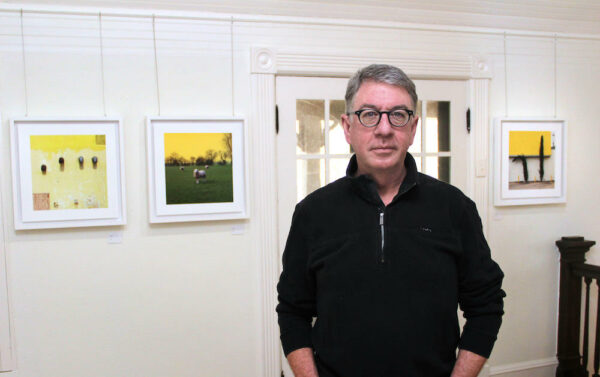
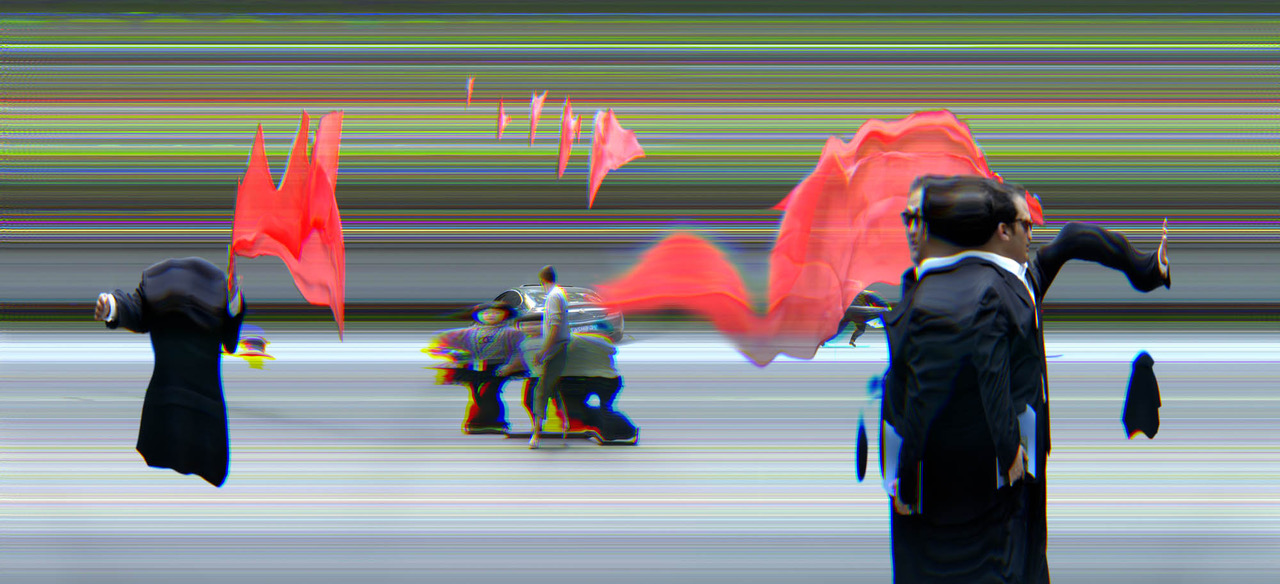
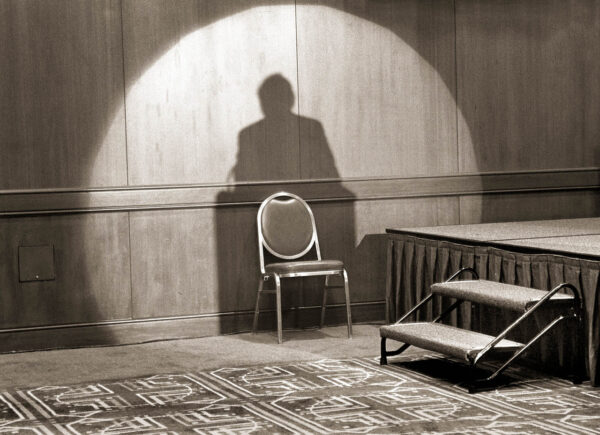
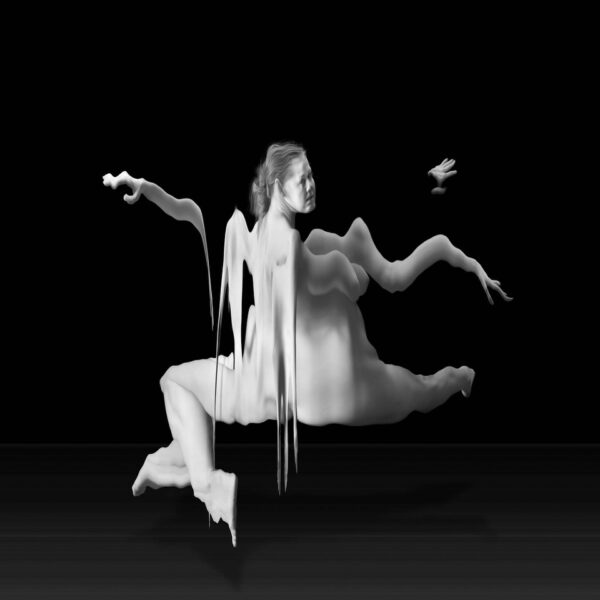


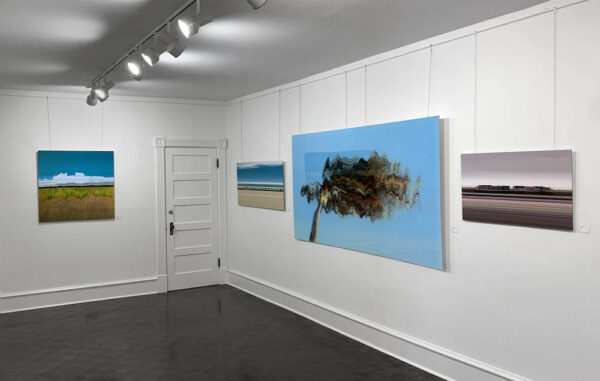

11 comments
I enjoyed this Sweeney/Seale conversation and regard Ansen as the smartest artists working today. His Corn Crib site specific, permanent installation art project speaks volumes for both his technical prowess as well as his sensitivity to place and time. He is the Mensa artist of his generation.
Good interview and a show to see. Thanks.
Thank you Gary Sweeney and Glasstire! Another one out of the park! Ansen is an amazingly strong person, a brilliant inventor, and an incredible artist. San Antonio has been blessed with one of the best! Keep it up Ansen!!!!!
Wonderful interview! Glad to get more of your back story Ansen, as well as further thoughts from you on art and photography. Miss seeing you and Doerte! Congrats on it all!
Great Interview! Ansen is a true renaissance man, methodical and exacting in crafting the technology behind his art, but also tapping into whimsey and spontaneity. Congratulations! Enanwall Girdiga!
This is a fact check. Everything Ansen said in this interview is true. I’m his mother.
Ansen Seale is the best and most inventive photographer in SAN Antonio in my opinion. He is also a compassionate and fine human being .
Ansen Seale has had a few interviews about this exhibit. This is the best. Thank you. We are very honored to have this exhibit at the Art League. We enjoyed working with him. And we’re not done yet. Please join us for his reception at the Art League, Sunday, March 21, 1:00-5:00. Dona LeCrone Walston,President, San Antonio Art League
fantastic, thank you glasstire , Gary Sweeney and the incredible Ansen Seale, You’re a strong reminder that art and science are used to be brothers. Thank you for your hard work.
In addition to Ansen’s amazing intelligence and innovation, I’ve always loved his perennial childlike wonder. What a great combination of qualities. Thanks, Ansen!
An honor and delight to have known and worked with Ansen Seale for almost 30 years. In our close knit arts community, Ansen has always been a trusted ear, a good and supportive friend and an outstanding talent. This retrospective is very well deserved and I wish him many more creative years to come in the studio.